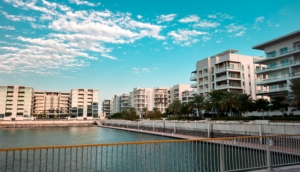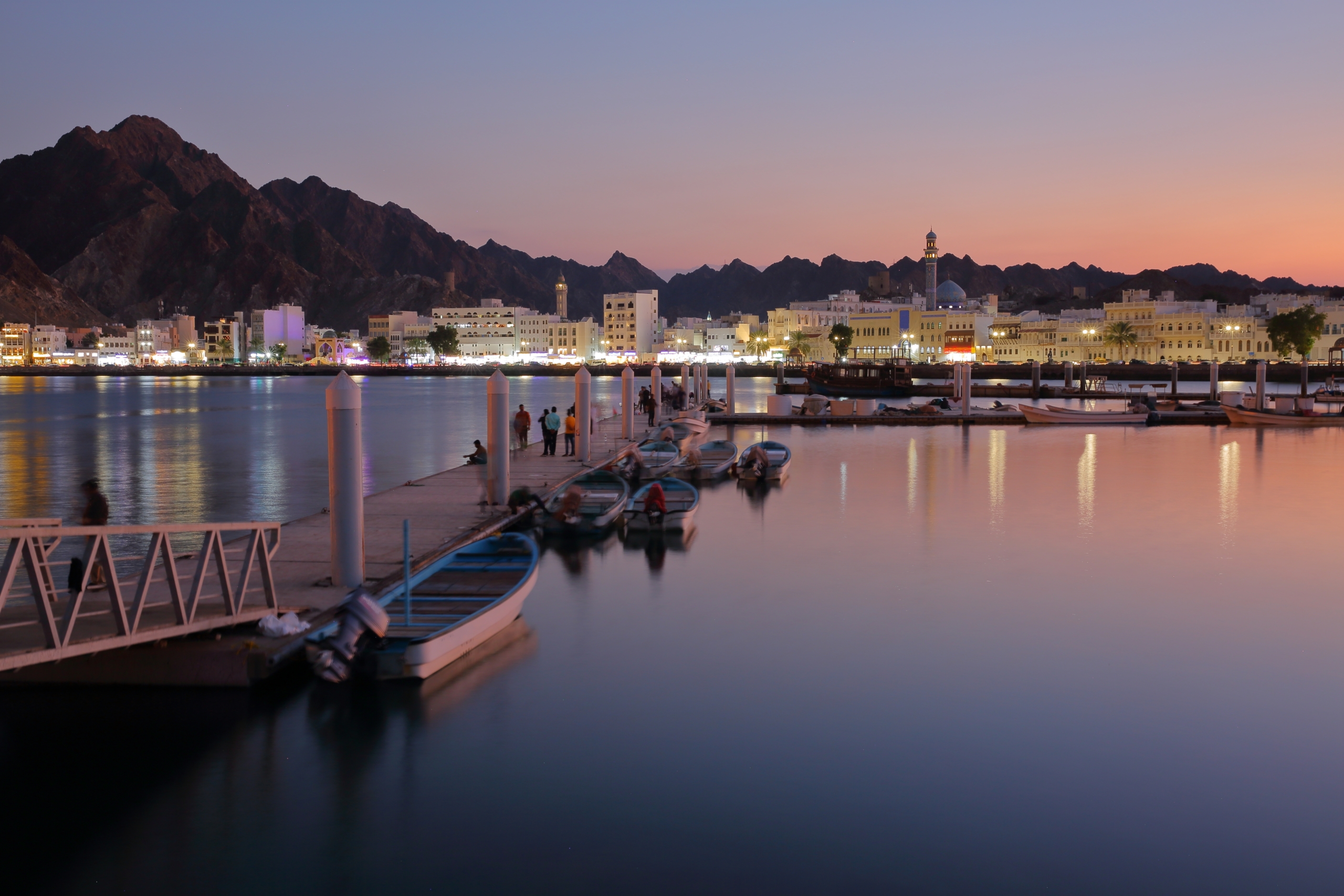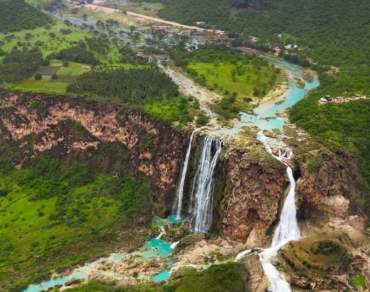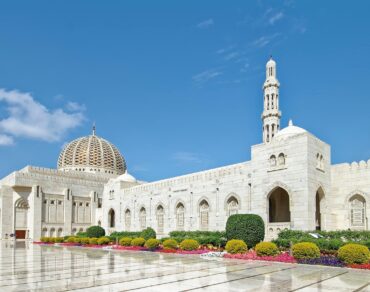“You can’t possibly see Muscat in just one day!” These words echoed as I planned my quick stop in Oman’s capital. My experience proved that choosing what to see in Muscat isn’t challenging – creating the perfect route to capture its essence matters most.
The city’s treasures range from the gleaming marble of the Sultan Qaboos Grand Mosque to the vibrant lanes of Muttrah Souk. We mapped the best way to spend 24 hours in Muscat. Our thoughtful itinerary weaves together ancient heritage, royal landmarks, traditional markets, and coastal charm. You won’t waste time on typical tourist traps.
The tested route helps you experience the city’s best spots without feeling overwhelmed. You’ll learn the perfect timing to visit each location, the quickest way to navigate between sites, and the best spots to capture memorable photos.
Planning Your Perfect One-Day Muscat Route
Here’s our proven strategy to help you get the most out of your Muscat adventure. Years of visits have helped us perfect the timing and quickest ways to explore this expansive city.
Best times to visit each attraction
Perfect timing makes all the difference in Muscat. The city shines from October through March with pleasant temperatures between 15°C to 30°C. These months let you walk comfortably outdoors and fully appreciate the city’s attractions.
Our tested schedule for key spots:
- Sultan Qaboos Grand Mosque: Visit between 8:30 AM – 11:00 AM (closed Fridays)
- Muttrah Souk: Early morning (6:00 AM – 10:00 AM) for the best experience
- Coastal attractions: Late afternoon for perfect lighting and comfortable
 Time-saving tips between locations
Time-saving tips between locations
We’ve learned some vital time-saving strategies over our visits. Sultan Qaboos Street acts as the main artery connecting major attractions. Here’s our suggested route:
- Start at the Grand Mosque early morning
- Move westward toward Muttrah for mid-morning activities
- Explore the Corniche area during afternoon hours
- End your day at Al Mouj Marina for sunset
Note that distances between attractions can be misleading. A seemingly short distance on the map might take 20-30 minutes by car because of Muscat’s coastal layout.
Morning: Sacred and Royal Attractions
The architectural marvel that defines Muscat’s skyline marks the start of our morning adventure. Our carefully planned route takes us to the city’s most sacred spots.
Sultan Qaboos Grand Mosque visit (8-11 am)
The mosque opens its doors to non-Muslim visitors at 8:00 AM, and we’re there right as it opens. The early morning sun creates magical shadows across the sandstone exterior at this perfect time. The main prayer hall leaves us in awe with its 8-ton chandelier that hangs majestically above the world’s second-largest hand-woven carpet.
Note that you must follow this dress code:
- Women: Long sleeves, ankle-length pants/skirts, head covering
- Men: Long pants and sleeves
- Both: No tight-fitting clothes
Royal Opera House photo stop
Oman’s premier venue for musical arts sits just a short drive from the mosque. The exterior is a photographer’s dream, even though we can’t enter during our morning visit. The modern Omani architecture creates stunning photo opportunities with its reflective marble surroundings. We take about 20 minutes to capture the building’s grandeur in the morning light.
Al Alam Palace viewing
The Sultan’s ceremonial palace ends our morning cultural circuit. The palace engages visitors with its striking blue and gold columns and stands majestically between two 16th-century Portuguese forts, Al Jalali and Al Mirani. The palace grounds offer perfect vantage points for photos, though the interior remains private.
The unique mushroom pillars glow golden in the morning light – perfect for photography. The beautifully landscaped gardens provide ideal spots to capture the contrast between stark white walls and the colorful facade.
| Location |
Visiting Time |
Photography Tips |
| Grand Mosque |
8:00-9:30 AM |
Early morning for minimal crowds |
| Opera House |
9:45-10:15 AM |
Capture reflections on marble |
| Al Alam Palace |
10:30-11:00 AM |
Golden hour lighting |
The moment you step into Muttrah Souq, time seems to freeze. This ancient marketplace shows us a completely different side of Muscat that contrasts beautifully with the grand monuments we saw earlier today.
 Navigating Muttrah Souk like a local
Navigating Muttrah Souk like a local
This 200-year-old marketplace has a clever layout that makes sense once you get your bearings. Each section has its character – silver and gold merchants stick together, while frankincense and spice vendors create their fragrant corner. The pathways slope gently toward the seafront, so you’ll never truly get lost in these maze-like alleys.
Best spots for authentic Omani lunch
Our stomachs started growling after all that walking through the market. These spots near the souq each bring something special to the table:
| Restaurant |
Specialty |
Ambiance |
| Bait Al Luban |
Shuwa meat |
Sea-view balcony |
| Bin Ateeq |
Harees |
Traditional floor seating |
| Dukanah |
Omani desserts |
Historic house setting |
Bait Al Luban won us over with its mix of traditional flavors and harbor views. The slow-cooked shuwa melts in your mouth, and they serve it with dates and Omani coffee – just what we needed during our 24-hour Muscat adventure.
Shopping tips and bargaining etiquette
Bargaining here creates relationships beyond just haggling over prices. These techniques worked well for us:
- Start with “As-salamu alaykum” as a greeting
- Begin offers at 40-50% of the asking price
- Use phrases like “Kam hatha?” (How much?) and “Shway ghali” (A bit expensive)
- Bundle multiple items for better deals
- Keep negotiations friendly and respectful
Dhofar region’s frankincense stands out as the world’s finest. The silver crafts here hold more value than similar pieces elsewhere. Cash works better than cards for getting good deals on these precious items.
The market buzzes with energy during afternoon hours. Morning visits reward you with smaller crowds and better prices. Surrounded by aromatic spices and glittering handicrafts, this part of Muscat feels authentic and timeless.
Afternoon: Coastal Heritage Trail
The long shadows stretch across the pristine waterfront of Muttrah as we walk in the afternoon sun. Blue waters of the Gulf of Oman meet the rugged Al Hajar Mountains here. This part of our 24 hours in Muscat shows the city’s connection to the sea.
Muttrah Corniche walk highlights
A living museum of Omani heritage spreads before us along the three-kilometer promenade. Our walk starts near the fish market and continues toward Riyam Park. Elegant lamp posts and well-kept flowerbeds line the path. The mountain backdrop creates a stunning contrast against the water.
Traditional merchants’ houses stand along our route. Their intricate latticed windows tell stories of Muscat’s glory days as a trading hub. The late afternoon offers more pleasant temperatures, and the golden light makes the waterfront’s historic architecture look spectacular.
 Historic forts and watchtowers
Historic forts and watchtowers
Muttrah Fort catches everyone’s eye from its spot high on the rocky hills. The Portuguese built it in 1507 and later improved its defenses. The fort’s winding wall and impressive towers watch over the harbor silently. We find three circular towers with historic cannons that once guarded this important port.
| Fort |
Best Viewing Time |
Photo Spot |
| Muttrah Fort |
3:00-5:00 PM |
Corniche center |
| Portuguese Watchtower |
4:00-6:00 PM |
Halfway point |
| Harbor Towers |
5:00-6:00 PM |
Near souk entrance |
Harbor and traditional dhow boats
The harbor shows us an interesting mix of old and new. Traditional wooden dhows, which represent Oman’s maritime heritage, float gently next to modern ships. These iconic boats serve both fishing and tourism purposes now, showing centuries of seafaring tradition.
Perfect photo opportunities present themselves at:
- The central harbor viewpoint, where dhows frame the mountain backdrop
- The curved bay near the watchtower,r where boats gather at sunset
- The historic port entrance with its mix of traditional and modern vessels
Oman’s craftsmen made the world’s finest dhows, passing their skills down through generations since the 6th century. Modern dhows now use motors, but their unique design stays the same. These vessels help us learn about the maritime culture that shaped Muscat’s character.
This coastal trail proves crucial to our one-day Muscat adventure. The sea’s influence touches everything in Omani life, from trade to architecture. Warm afternoon light creates perfect conditions to photograph and reflect on this historic maritime setting.
Evening: Modern Muscat Experience
The sun begins to set as our whirlwind tour of Muscat shifts from its historic center to its modern heart. Our 24 hours in Muscat wrap up by showing how this ancient port city adopts new ways while staying true to its seafaring roots.
Al Mouj Marina sunset views
The breathtaking Al Mouj Marina stretches across 135,192m² of prime waterfront. Traditional dhows bob alongside luxury yachts in the crystal-clear waters that mirror the sky’s changing palette. The most spectacular views happen between 6:00 PM and 7:30 PM, as the setting sun bathes everything in brilliant oranges and purples.
The marina’s 2km pristine beach lets us pick the perfect spot to watch the show. We can see boats returning to the harbor while the sun sinks into the horizon. Many people book sunset cruises here – a fantastic way to cap off a day of Muscat sightseeing.
 Contemporary dining options
Contemporary dining options
Night brings the waterfront to life as restaurants light their terraces. Local flavors mix with international cuisine at numerous spots. The best restaurants here give us amazing marina views while we dine.
| Restaurant Location |
Ambiance |
View |
| Waterfront Deck |
Modern-casual |
Marina panorama |
| Beach Boulevard |
Upscale |
Sunset over the Gulf |
| Marina Walk |
Family-friendly |
Yacht basin |
We grab a table at a waterfront spot where sea breezes carry snippets of conversation and the soft clink of glasses. The menu blends fresh Omani seafood with modern cooking styles.
Night photography spots
Muscat becomes a visual feast after dark. The city lights create perfect shots that show both its old-world charm and modern edge.
Essential night photography locations:
- Royal Opera House illuminated facade
- Al Mouj Marina’s reflection pool
- Illuminated mosque domes against the night sky
- Harbor lights along the marina walk
Our photography tips:
- Set up tripods between 7:30 PM and 8:30 PM to catch perfect blue hour shots
- Long exposures capture the marina’s mirror-like waters
- Modern architecture makes great frames for traditional elements
- Yacht lights create stunning leading lines in photos
Cool evening air surrounds us as we take in how smoothly old meets new in this city. Al Mouj gives us one last sweeping view of the lit-up coastline, where ancient heritage blends with modern luxury.
Conclusion
You can experience Muscat in one day (24 hours) with our well-planned route. Smart timing and thoughtful planning help you see the city’s character. The spiritual grandeur of Sultan Qaboos Grand Mosque awaits you. The vibrant Muttrah Souq beckons. The contemporary Al Mouj Marina completes your day.
Muscat knows how to combine ancient traditions with modern sophistication perfectly. Sacred monuments greet you in the morning. A historic corniche walk fills your afternoon. The marina’s sunset creates unforgettable moments in the evening. These stops take advantage of natural lighting and comfortable temperatures while helping you avoid crowds.
Note that planning makes your Muscat visit rewarding. Our tested route and practical tips will help you find that 24 hours is enough to fall for this city. Here, traditional heritage and contemporary luxury create a unique charm. Ready for a quick journey filled with culture and wonder?
A one-day trip to Muscat is calling. Book Now! 

 Time-saving tips between locations
We’ve learned some vital time-saving strategies over our visits. Sultan Qaboos Street acts as the main artery connecting major attractions. Here’s our suggested route:
Time-saving tips between locations
We’ve learned some vital time-saving strategies over our visits. Sultan Qaboos Street acts as the main artery connecting major attractions. Here’s our suggested route:
 Navigating Muttrah Souk like a local
This 200-year-old marketplace has a clever layout that makes sense once you get your bearings. Each section has its character – silver and gold merchants stick together, while frankincense and spice vendors create their fragrant corner. The pathways slope gently toward the seafront, so you’ll never truly get lost in these maze-like alleys.
Best spots for authentic Omani lunch
Our stomachs started growling after all that walking through the market. These spots near the souq each bring something special to the table:
Navigating Muttrah Souk like a local
This 200-year-old marketplace has a clever layout that makes sense once you get your bearings. Each section has its character – silver and gold merchants stick together, while frankincense and spice vendors create their fragrant corner. The pathways slope gently toward the seafront, so you’ll never truly get lost in these maze-like alleys.
Best spots for authentic Omani lunch
Our stomachs started growling after all that walking through the market. These spots near the souq each bring something special to the table:
 Historic forts and watchtowers
Muttrah Fort catches everyone’s eye from its spot high on the rocky hills. The Portuguese built it in 1507 and later improved its defenses. The fort’s winding wall and impressive towers watch over the harbor silently. We find three circular towers with historic cannons that once guarded this important port.
Historic forts and watchtowers
Muttrah Fort catches everyone’s eye from its spot high on the rocky hills. The Portuguese built it in 1507 and later improved its defenses. The fort’s winding wall and impressive towers watch over the harbor silently. We find three circular towers with historic cannons that once guarded this important port.
 Contemporary dining options
Night brings the waterfront to life as restaurants light their terraces. Local flavors mix with international cuisine at numerous spots. The best restaurants here give us amazing marina views while we dine.
Contemporary dining options
Night brings the waterfront to life as restaurants light their terraces. Local flavors mix with international cuisine at numerous spots. The best restaurants here give us amazing marina views while we dine.
 Time-saving tips between locations
We’ve learned some vital time-saving strategies over our visits. Sultan Qaboos Street acts as the main artery connecting major attractions. Here’s our suggested route:
Time-saving tips between locations
We’ve learned some vital time-saving strategies over our visits. Sultan Qaboos Street acts as the main artery connecting major attractions. Here’s our suggested route:
 Navigating Muttrah Souk like a local
This 200-year-old marketplace has a clever layout that makes sense once you get your bearings. Each section has its character – silver and gold merchants stick together, while frankincense and spice vendors create their fragrant corner. The pathways slope gently toward the seafront, so you’ll never truly get lost in these maze-like alleys.
Best spots for authentic Omani lunch
Our stomachs started growling after all that walking through the market. These spots near the souq each bring something special to the table:
Navigating Muttrah Souk like a local
This 200-year-old marketplace has a clever layout that makes sense once you get your bearings. Each section has its character – silver and gold merchants stick together, while frankincense and spice vendors create their fragrant corner. The pathways slope gently toward the seafront, so you’ll never truly get lost in these maze-like alleys.
Best spots for authentic Omani lunch
Our stomachs started growling after all that walking through the market. These spots near the souq each bring something special to the table:
 Historic forts and watchtowers
Muttrah Fort catches everyone’s eye from its spot high on the rocky hills. The Portuguese built it in 1507 and later improved its defenses. The fort’s winding wall and impressive towers watch over the harbor silently. We find three circular towers with historic cannons that once guarded this important port.
Historic forts and watchtowers
Muttrah Fort catches everyone’s eye from its spot high on the rocky hills. The Portuguese built it in 1507 and later improved its defenses. The fort’s winding wall and impressive towers watch over the harbor silently. We find three circular towers with historic cannons that once guarded this important port.
 Contemporary dining options
Night brings the waterfront to life as restaurants light their terraces. Local flavors mix with international cuisine at numerous spots. The best restaurants here give us amazing marina views while we dine.
Contemporary dining options
Night brings the waterfront to life as restaurants light their terraces. Local flavors mix with international cuisine at numerous spots. The best restaurants here give us amazing marina views while we dine.



